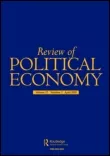- | Academic & Student Programs Academic & Student Programs
- | Journal Articles Journal Articles
- |
The Structure of Social Capital: An Austrian Perspective on its Nature and Development
Originally published in Review of Political Economy
As the literature on social capital has emerged over the past two decades, both advocates and critics of the concept have grappled with the question ‘what is the nature of “social capital?”’. By viewing this question through the lens of Austrian capital theory (particularly under Lachmann's influence) we can understand social capital as being structural in nature, made up of heterogeneous and often complementary elements.

As the literature on social capital has emerged over the past two decades, both advocates and critics of the concept have grappled with the question ‘what is the nature of “social capital?”’. By viewing this question through the lens of Austrian capital theory (particularly under Lachmann's influence) we can understand social capital as being structural in nature, made up of heterogeneous and often complementary elements. This way of thinking about social capital opens the door for understanding the role of the ‘social entrepreneur’ as discovering new combinations within the social capital structure. By carving out a role for the change agent, we see social capital development as a process of social learning that extends the cognitive reach of individuals beyond what they can know directly. An Austrian approach to social capital advances the theoretical debate by linking the literature on network analysis (in which the focus is on individualistic accumulation of social capital) and broader questions of social capital embedded within community-wide norms. Further, an Austrian understanding of social capital informs policy debates, such as the question of whether social capital development can be, or needs to be, part of a deliberate development strategy.
Find this article at Taylor & Francis.
To speak with a scholar or learn more on this topic, visit our contact page.

